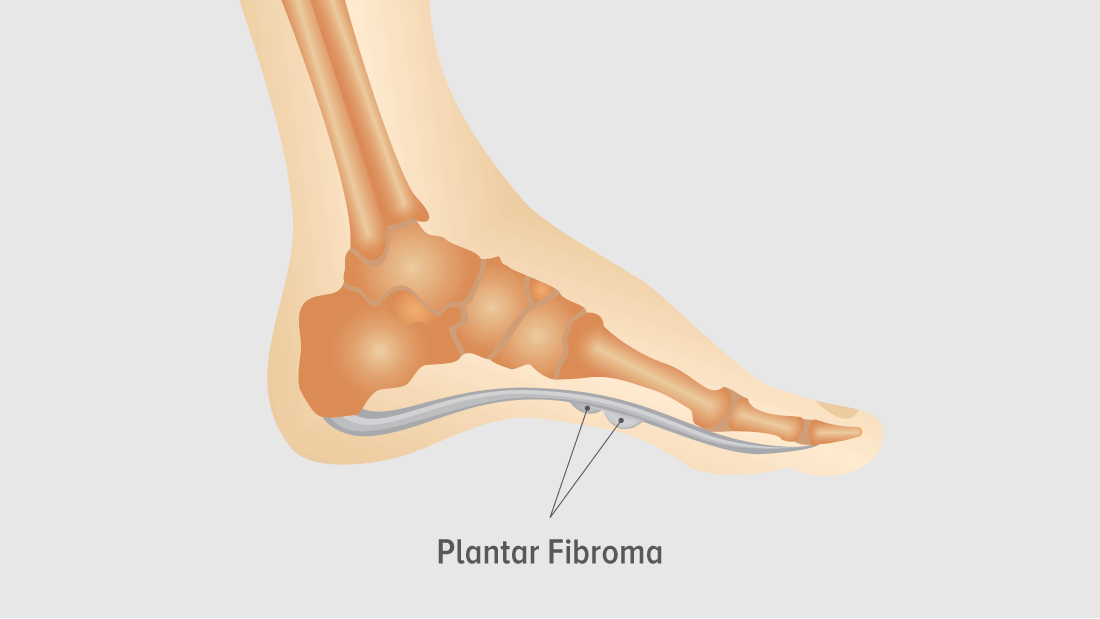Plantar Fibroma
A plantar fibroma is a growth which develops in the arch of the foot. It is non-cancerous. A plantar fibroma grows in an area known as the plantar fascia, which is the thick tissue which is found at the bottom of the foot. This tissue performs the function of stabilising the foot arch, and stretches from the toe to the heel.
REQUEST AN APPOINTMENT
Causes
The cause of a plantar fibroma is presently unknown. There is evidence to suggest that genetics increase chances of a plantar fibroma developing. People from Northern Europe have been highlighted as more likely to have a plantar fibroma.
Some experts believe that there is a link between injury or trauma and the growth of plantar fibromas. There are medications which have also been highlighted as a possible cause, including anti-seizure medications, glucosamine, beta-blockers and vitamin C.
Other risk factors include diabetes, chronic liver disease and seizure disorders such as epilepsy.
Symptoms
The main symptom of a plantar fibroma is a growth which develops at the middle of the arch in the base of the foot. These growths are usually small bumps. They can become painful if they grow larger, or if pressure is applied to them – this can occur when standing barefoot or walking.
Plantar fibromas themselves are not harmful, and in some cases will shrink on their own. When they are causing discomfort, there are a number of treatment options which are available.

Treatment
A doctor will typically diagnose plantar fascia via a physical examination, and often additional imaging tests – such as an MRI scan, x-ray, bone scan – or a biopsy of the lesion.
The treatment plan advised for a plantar fibroma will depend on the severity and effects of the growth. A corticosteroid injection can be administered in order to reduce inflammation and improve the range of movement. It should be noted that this does not serve to prevent the growth from developing. Topical treatment, in the form of transdermal verapamil gel, can be effective in inhibiting the growth over the course of a few months.
Orthotic implements such as insoles and foam pads can help to redistribute the body weight and relieve some of the painful symptoms which are associated with a plantar fibroma. Physical exercises can help to strengthen the foot and leg muscles while stimulating cell growth and increasing blood circulation.
In severe plantar fibroma cases, the doctor may advise that the growth is surgically removed. Because this procedure risks flattening the foot arch, it is typically considered as a last resort.
Ankle pain can be distressing, especially if you're not sure what options are open to you. If you're wondering if surgery could help you, book an appointment.
* Routine private appointments either face to face or remotely are available
